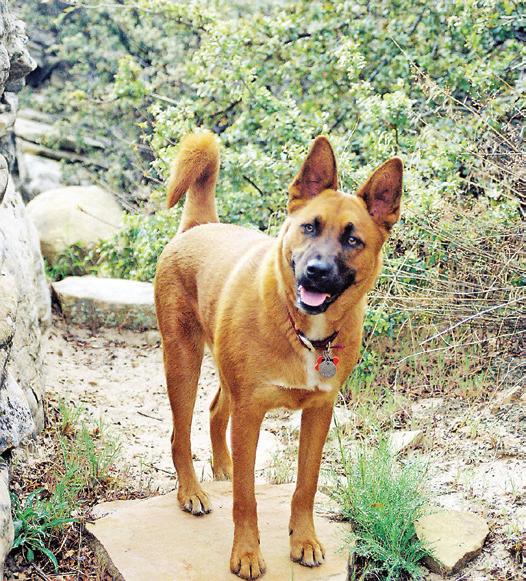HELP FOR YOUR Growly Doggy! BY VERONICA SELCO, MSW, KPACTP, CBATI, CNWI
Walking a dog that growls, barks and lunges at other dogs on walks is stressful! Whether your dog is lunging at other dogs because he is overly friendly and wants to go meet a dog nearby or whether he is afraid of the other dog and trying to gain some distance, you can make changes in your routine to change the way your dog reacts to other dogs.
T
ake the dog’s individual needs into account. Look at the whole picture, including developmental needs, training history, veterinary care, nutrition, exercise and enrichment. When we see dogs that bark or lunge at other dogs, we often find that they react to other triggers too. To create behavior change, we need to address the other aspects too.
Don’t let your dog rehearse the barking and lunging! Is your dog’s home environment promoting a high arousal state?
Think SPAW - Provide A Calm Home Environment • • • • •
Create sanctuary using pens or safety gates to create private retreat; block access to visual and auditory stimulation during the day. Play classical music or reggae, or bioacoustics specifically created for calming. Diffuse medical grade aromatherapy – promote calming and cleansing mood. Provide enrichment to relieve boredom, satisfy need to chew, teach problem solving with puzzle toys to encourage licking, chewing, sniffing. Pheromone plug ins such as Adaptil to reduce anxiety.
FUNdamental skills for owner: LEARN ABOUT CANINE BODY LANGUAGE > Learn signs of stress and learn to
identify the moment before your dog growls, lunges or barks. Some signals to look for include, lip licking, furrowed brows, whale eye, tense jaw, freezing, low tail carriage, raised hackles and more. Your goal is to keep your dog in a “thinking” zone. Over time you will work to close the gap. If the dog “reacts” to a dog, move away from the other dog.
EMERGENCY EXIT > Practice walking with
your dog towards a helper without a dog, then making a U turn away from the helper. This is where you can ask your dog to “touch” your moving hand away from the helper. Once this feels comfortable, the helper can also start approaching you, as you’re approaching him.
FUNdamental skills for dog:
Use positive reinforcement to build a relationship of trust and good communication, where your dog has the opportunity to earn treats for good behavior. Teach your dog FUNdamental behaviors to boost confidence, build desire to work in collaboration with you and build a skill set of behaviors to replace the lunging and barking.
NAME RECOGNITION > Call your dog’s name when he is just a few feet away and click and toss treat when he turns to look to you. Even though your dog may know his name, you are building value. TOUCH > Place straight open hand near your dog’s nose and click and treat when he approaches it (hand target). Repeat a few times. Now, place your hand in front of your dog’s nose and have him follow your moving hand to the left, click and treat; to the right click and treat; then have him follow your hand as you take a few steps forward walking in a straight line and click and treat.
LOOK AT THAT > First, you click and treat your dog when he looks at the other dog. When this behavior is consistent and reliable, you increase the challenge. Now, you wait for your dog to look at the other dog, then look to you. You click and treat your dog when he looks at you.
EQUIPMENT: ✔ Harness with two points of connection, front and back to remove pressure on the neck, avoid pain/injury and reduce arousal level. This allows for flexibility to clip on to front, back or both when needed. ✔ Leash – minimum 6 feet or longer ✔ Treat Pouch
SUPPLIES: ✔ Clicker to “mark” desired behavior. You can use a verbal marker, such as “yes”, if you prefer. ✔ Lots of yummy, smelly, pea sized treats
32
Las Vegas Pet Scene Magazine • September/October 2020







